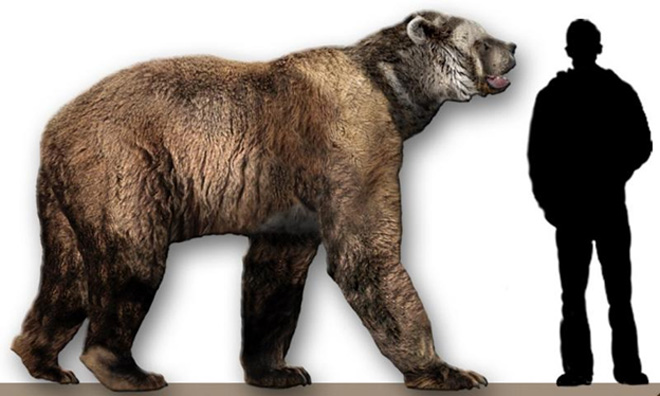See also: Prehistoric Horse (Equus sp.) maxilla

Short-faced Bear (Arctodus simus) mandible

Short-faced bear mandible (lower jaw) discovered recently near Selawik, Alaska. For a specimen that is likely well over 11,000 years old, it is in pristine condition! Note: The arrows point to identifying features on the bone that help us to determine the jaw belonged to a prehistoric bear.

Artist's depiction of short-faced bear with silhouette of 6 ft. (~2m) tall man for scale.
A very brief history of the short-faced bear:
Though not a lot is known about the origins of the short-faced bear, it is known to have occupied North America from around 800,000 years ago until approximately 11,000 years ago. It was a common bear in its time and was the largest mammalian, terrestrial carnivore in North America. Their bones have been found from Alaska to Florida. Analysis of nitrogen-15 levels in their bones suggests they were highly carnivorous and required ~35 lbs. of food per day to support their long-legged, nearly one ton bodies.
The short-faced bear lived alongside its cousins; the brown bear, black bear and polar bear.
